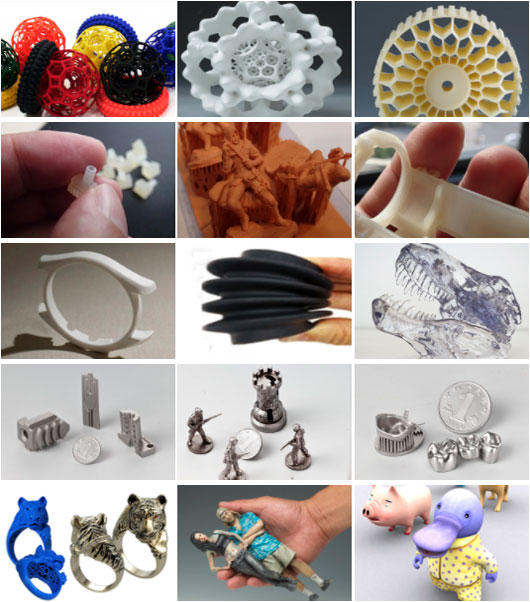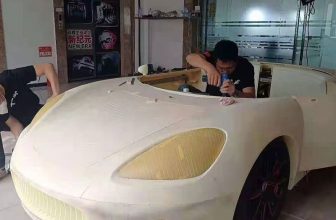
Guide
- How to Calculate 3D Printing Price (SLS, SLA, SLM, MJF, FDM, ETC.,)
- Anodizing vs. Painting: An In-depth Analysis
- 9 Types of 3D Printed Metal Copper Techniques
- 3D Printing Materials and How to Choose the Right One?
- What Is Micro Manufacturing Technology
- Wire 3D Printing: Process, Filament, Printer and Features
- Uncover The Mystery Of CNC Machining
- Huazhong University of Science and Technology has made new breakthroughs in ultrafast laser 3D printing of fine and complex semiconductor micro-nano structures
- In 2025, there will be more than 600 metal 3D printing equipment serving China’s aerospace and other fields
- Looking at the development trend of 3D printing from Formnext 2021
- 3D printed prototype silica gel molds, realizing small batch production of industrial products
- Global architectural 3D printing inventory, no need to move bricks to build a house
- The latest application cases of 3D printing in aviation
- 3D printing everything? Japanese media: Printable buildings, parts, organs and even food…
- 3D printing provides emergency production of anti-epidemic products, global anti-epidemic
Case Studies

Fused Deposition Modeling 3D Printing
The IoT system of 3d-printing-china.com can realize one-click printing of hundreds of FDM devices
What Is FDM 3D Printing?
FDM (Fused Deposition Modeling) is a process fused deposition manufacturing (FDM) process developed by American scholar Scott Crump in 1988. FDM is the most widely used 3D printing technology and is usually the first 3D printing technology that people come into contact with. Fused Deposition Modeling (FDM) or Fused Filament Manufacturing (FFF) is an additive manufacturing process that belongs to the series of material extrusion. In FDM, an object is constructed by selectively depositing molten material in a predetermined path layer by layer. The material used is a thermoplastic polymer and is in the form of filaments.
FDM 3D Printing Services Company – FDM 3D Printing Parts Manufacturer
Fused deposition modeling (FDM) or fused filament processing (FFF) belongs to the material extrusion series. In FDM, objects are constructed by selectively depositing molten materials layer by layer in a predetermined path. The materials used are thermoplastic polymers, most of which are filamentous wires. Recently, granular equipment has also appeared.
FDM is the most widely used 3D printing technology, accounting for the largest proportion of the global 3D printing installed capacity, and is usually the first 3D printing device that people come into contact with. The nature of the FDM process itself determines the relatively rough accuracy of the printed product, and it is more used in areas such as consumption, education, and cultural creation in the initial stage. However, in recent years, with the rapid development of 3D printing technology, some quasi-industrial-grade FDM equipment, and industrial and medical-grade FDM printing materials have emerged, which has greatly broadened the application fields of FDM technology.
The Internet of Things system of 3d-printing-china.com can realize one-click printing of hundreds of FDM devices, with a variety of materials and colors to choose from, whether it is a batch order or a large-size (acceptable splicing) sample. Delivery is completed in a short period of time.
Table of Contents
Why Choose 3d-printing-china.com FDM 3D Printing Service
PTJ meets or exceeds the quality standards of the world’s most demanding industries with our state of the art equipment and quality standards. Our precision and productivity is made possible by our ultimate success factor: the presence of skillful, knowledgeable PTJ experts in FDM 3d printing and more additive manufacturing parts.
- No minimum order quantity
- Metal or plastic 3D printed prototype and production parts in 7-10 days
- Precision custom 3D printing parts at affordable prices
- Online free quote in the shortest time
- Single prototypes or complex shapes are both allowed
- A wide selection of metal or plastic materials
- Commercial and industrial-grade 3D printers
- Cooperative supplier assistance project
- Provide a quick solution for small batches of complex prototypes
- Provide a quick solution for small batches of complex prototypes
- We provide with our partner
- 3D printing services for metals and plastics
- Meet the rapid needs of complex prototype designers
FDM 3D Printing Process
The concept of 3D printing is no longer unfamiliar to us, because with the development of 3D printing technology, it has gradually integrated into our lives. 3D printed food, 3D printed toys, 3D printed cars, 3D printed biscuits, and even 3D printed houses, etc. Various 3D printed products. The fields involved in 3D printing include education, medical care, manufacturing, aerospace, military, etc., covering a very wide range. The reason why 3D printing is so powerful depends on a variety of technical routes, that is, a variety of printing methods.
FDM 3D printing technology is the most cost-effective way to produce custom thermoplastic parts and prototypes. Due to the high availability of the technology, the delivery cycle of FDM is very short (as fast as the next day delivery). And there are a variety of thermoplastic materials to choose from, suitable for prototyping and some non-commercial functional applications.
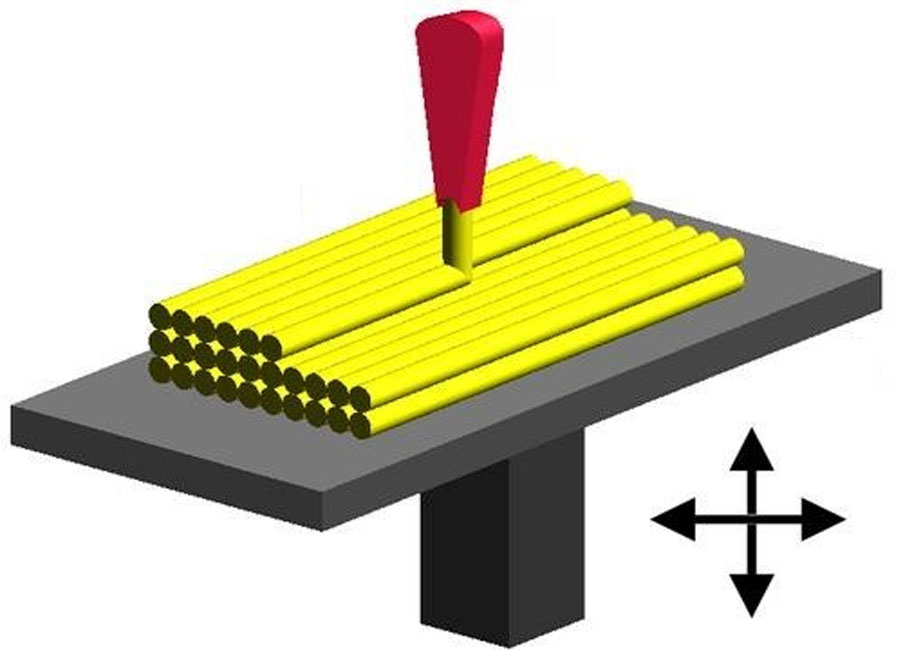
- First, load a roll of thermoplastic filament into the printer. Once the nozzle reaches the required temperature, the filament is fed into the extrusion head and melted in the nozzle.
- The extrusion head is connected to a 3-axis system so that it can move in the X and Y directions. The molten material is extruded into thin strips and deposited layer by layer in a predetermined position, where it cools and solidifies. Sometimes, the cooling rate of the material can be accelerated by using a cooling fan installed on the extrusion head.
- After one layer is printed, the worktable drops the thickness of one layer in a predetermined increment along the Z axis. The material is extruded and deposited on the solidified material of the previous layer, and the material is stacked layer by layer to form the final product.
- After printing, remove the support and finish the surface.
After the 3D printing model is completed, there will be some printing traces, and post-processing is required to achieve the desired effect. Using various post-processing methods, such as grinding and polishing, primer and painting, cold welding, steam smoothing, epoxy coating and metal plating, FDM 3D printed parts can be finished to very high standards.
The Features Of FDM 3D Printing
Most FDM systems allow adjustment of several process parameters, including nozzle and build platform temperature, build speed, floor height and cooling fan speed. These are usually set by the operator, so the designer should rarely care about them.
From the designer’s point of view, what is important is the build size and layer height:
The usable internal dimensions of a desktop 3D printer are usually 200 x 200 x 200 mm, while for industrial machines, it can be as high as 1000 x 1000 x 1000 mm. If you want to use a desktop computer (in order to reduce costs), you can break the large model into smaller parts and then assemble it.
The typical layer height used in FDM varies between 50 and 400 microns and can be determined at the time of order. Smaller layer heights can produce smoother parts and more accurately capture curved geometries, while larger layer heights can be produced faster and at lower cost.
Industrial-grade Of FDM 3D Printing
Industrial-grade FDM printers provide more powerful production capacity than desktop printers, with higher printing accuracy and larger print sizes.
Industrial-grade FDM printers can also print a wider range of materials, such as engineering plastics with high impact strength, biocompatibility, corrosion resistance, high temperature resistance, and flexibility. Although industrial-grade FDM printers are more expensive than desktop FDM printers, they are relatively simple to operate and low maintenance costs, which makes them a cost-effective solution for rapid prototyping and small-batch production operations.
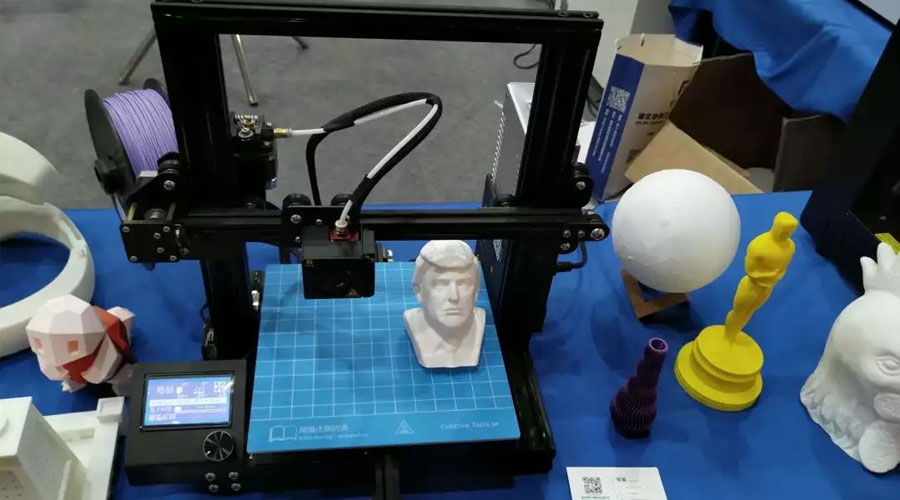
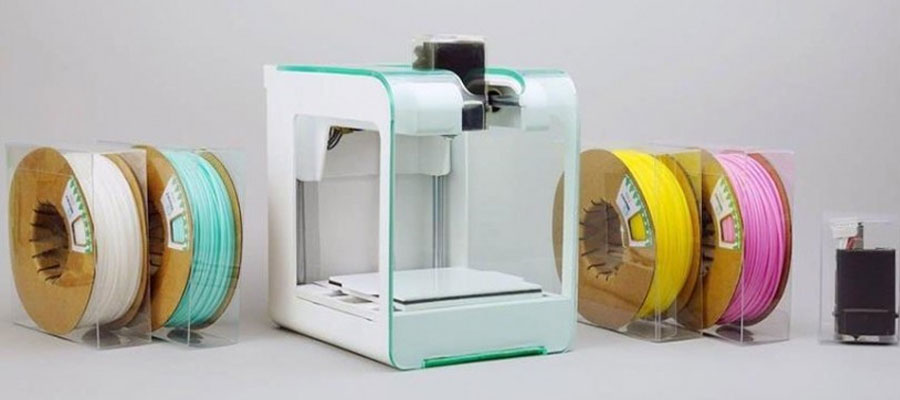
The Classification Of FDM 3D printer
At present, 3D printers are divided into two types: desktop-grade and industrial-grade. The difference between them is mainly in the forming size and printing accuracy. Generally speaking, the industrial-grade forming size is large and the printing accuracy is high, and the desktop-level forming size is small and the printing progress is low. Of course, with the update and iteration of 3D printers, the printing accuracy of desktop-level 3D printers has gradually improved.
The Support Of FDM 3D Printing
If the printed part has a suspended part, the printer can print some substrates on the bottom first, and the suspended part of the part can be printed on the base. This part of the substrate plays a supporting role, which is the so-called “support”. After the model is printed, the support is usually removed by trimming. If it is a more elaborate model, the removal of support is sometimes a delicate task. Of course, the amount and position of the support are related to the placement of the model. The same model, different placement positions, will form different supports. Proper placement of the model can reduce support.
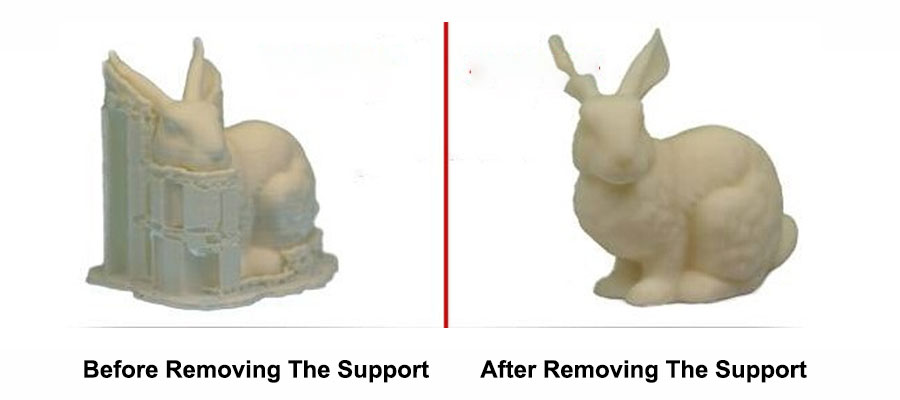
Support Material. As the name implies, it is the part that supports the molding material in the 3D printing process. After the printing is completed, the support material needs to be peeled off, so it also requires certain performance. The currently used support materials are generally water-soluble The material is soluble in water and easy to peel off. The specific characteristics requirements are as follows:
| FDM technology requirements for supporting materials | ||
| Performance | Specific requirements | Reason |
| Temperature resistance | High temperature resistance | Because the support material must be in contact with the molding material on the support surface, the support material must be able to withstand the high temperature of the molding material without decomposition and melting at this temperature. |
| Affinity with molding materials | Not wetted with molding material | The support material is an auxiliary method adopted in the processing, and must be removed after processing, so the affinity between the support material and the molding material should not be too good. |
| Solubility | Water-soluble or acid-soluble | For prototypes with complex cavities and pores, in order to facilitate post-processing, the support material can be dissolved in a certain liquid to support it. Since the molding materials used in FDM are generally ABS engineering plastics, the materials can generally be dissolved in organic solvents, so organic solvents cannot be used. At present, water-soluble support materials have been developed. |
| Melting temperature | Low | With a lower melting temperature, the material can be extruded at a lower temperature, which improves the service life of the nozzle. |
| Liquidity | High | Since the molding accuracy of the support material is not high, in order to increase the scanning speed of the machine, the support material is required to have good fluidity, and relatively speaking, the viscosity can be worse. |
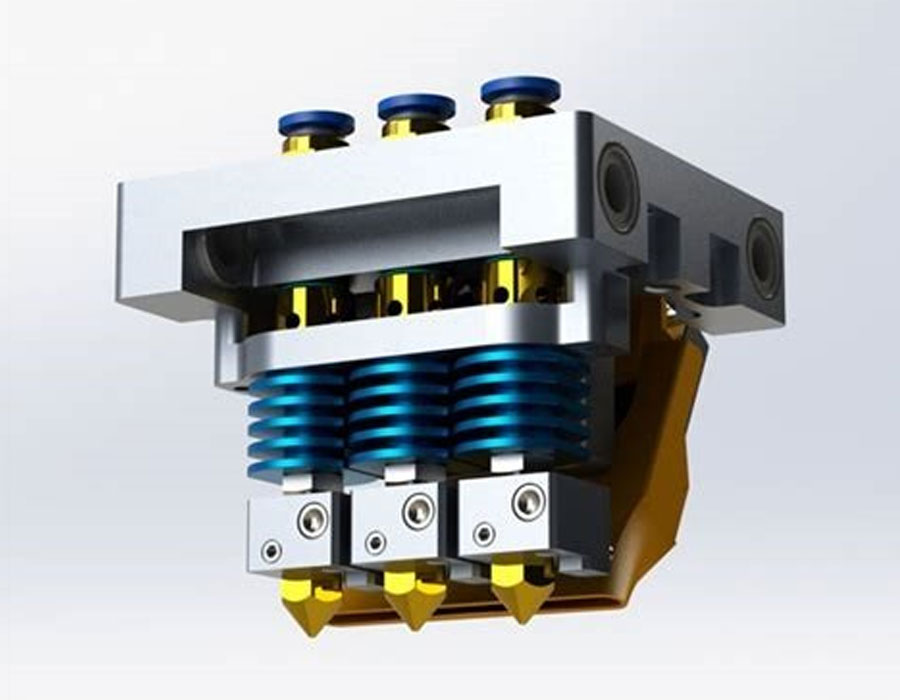
FDM 3D Printing Nozzle
For hot melt extrusion (FDM) printers, the core component is the printer nozzle. Its function includes three aspects, namely (1) filament feeding; (2) heating; (3) extrusion.
- (1) Wire feeding: the solid plastic wire is conveyed to the nozzle;
- (2) Heating: the wire delivered to the nozzle is heated to the melting point to form a molten state with a certain degree of fluidity;
- (3) Extrusion: The extrusion nozzle of the heated material is accurately dropped onto the forming platform and stacked into the desired shape.
Of course, the number of nozzles can also be multiple, and multiple nozzles can print a variety of different materials. For example, by printing materials of different colors, a better-looking model can be printed.
The Materials Of FDM 3D Printing
The commonly used materials for FDM printers are some thermoplastic materials, the main materials are PLA (environmental friendly materials), ABS, nylon, PHA, etc. In addition, mixing some wood fiber, metal powder, carbon fiber, etc. in PLA and ABS can print out models with woody, metallic, and high-strength performance; there are also luminous materials. After 15 minutes of exposure to this material, place it in Green light can be emitted in the dark.
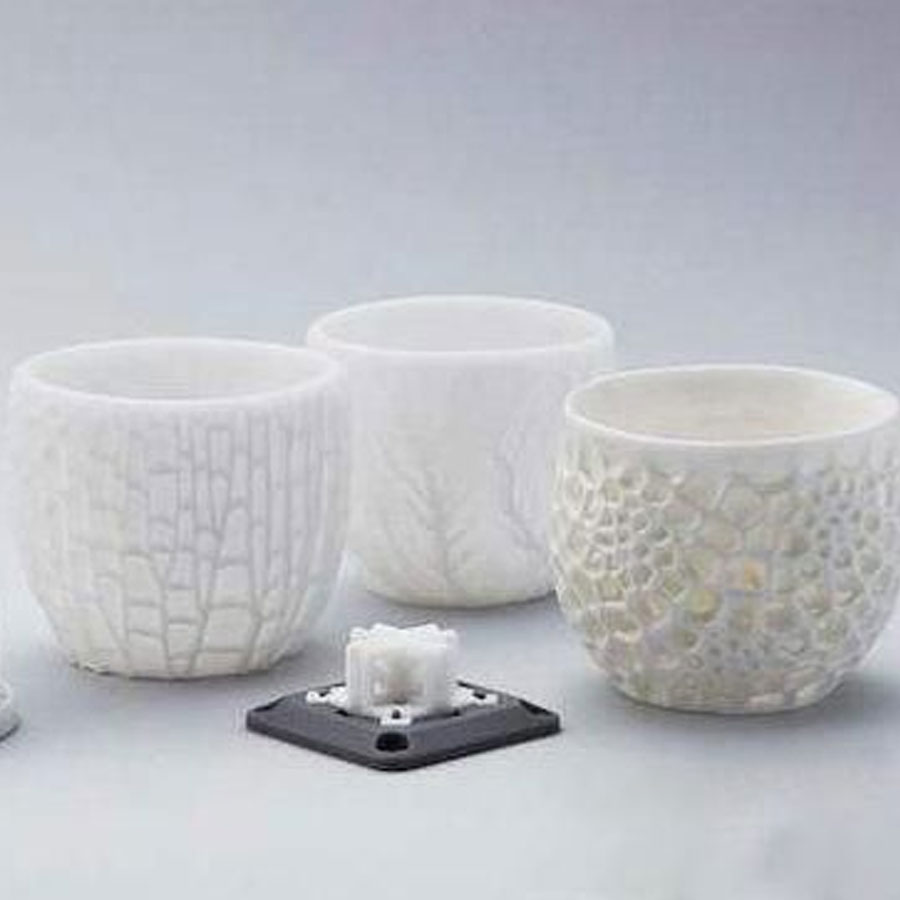
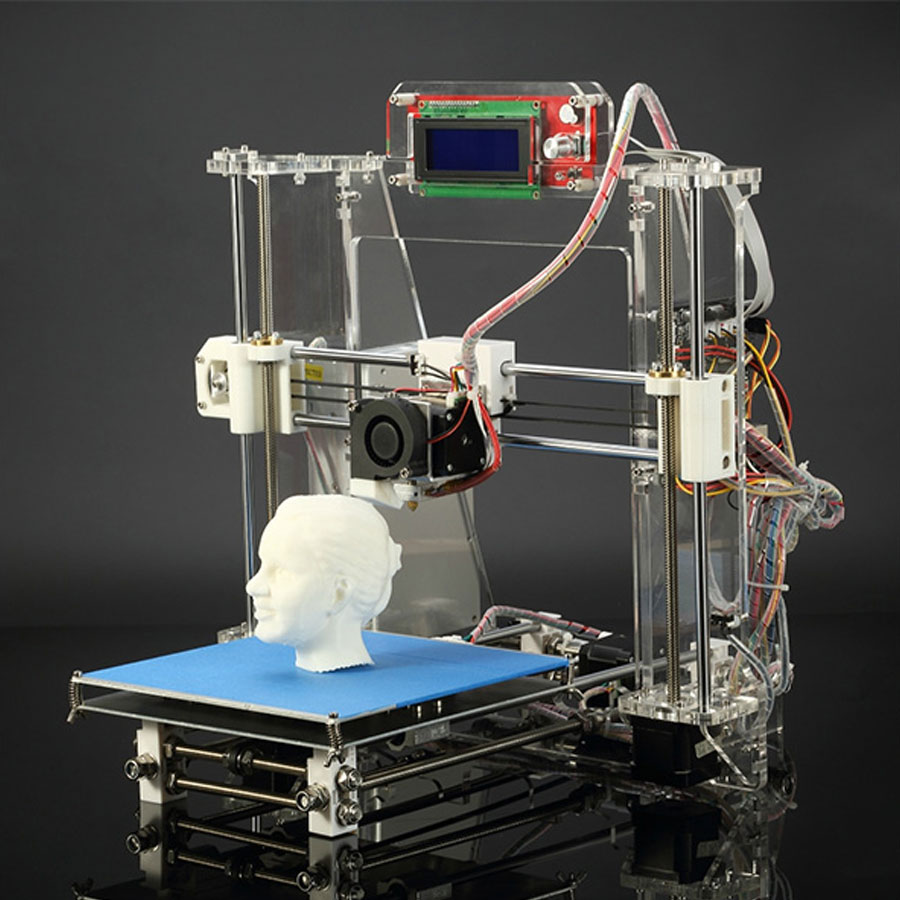
Advantages And Disadvantages Of FDM 3D Printing
Main Advantage
- FDM is the most cost-effective way to produce custom thermoplastic parts and prototypes.
- Due to the high availability of this technology, the delivery time of FDM is very short.
- There are a variety of thermoplastic materials to choose from, suitable for prototyping and certain non-commercial functional applications.
Main Disadvantages
- Compared with other 3D printing technologies, FDM has the lowest dimensional accuracy and resolution, so it is not suitable for parts with complex details.
- FDM parts may have visible layer lines, so post-processing is required to make the surface smooth.
- The layer bonding mechanism makes FDM parts have inherent anisotropy.
3d-printing-china.com FDM Case Studies

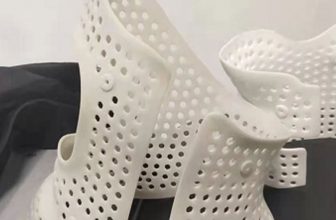
3D Printed High-Strength Large-Size Resin Medical Orthosis
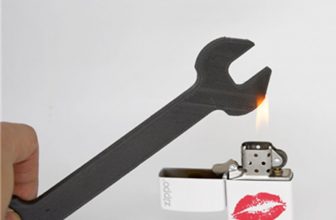
3D Printing High Temperature Plastic Materials

3D Printing Aluminum 6061 Model
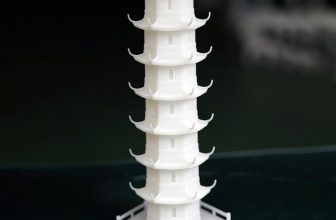
3D Printing Pagoda Model
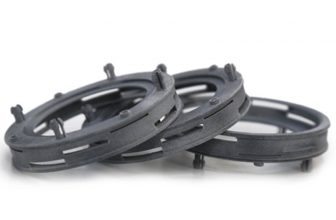
3D Printing Model Of PA12 Material
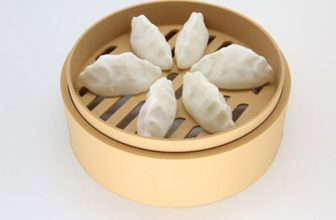
3D Printing Highly Simulated Food
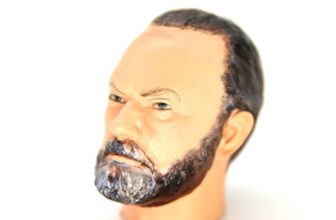
Personalized 3D Printing Avatar
PTJ offers online 3D printing services for china rapid prototyping and production of non-metal and metal 3D printed parts at affordable prices.
- * Supports drawing uploads in file formats “.pdf”, “.jpg”, and “.png”.
- * Supports file uploading and loading of 3D (3D) CAD data “.igs” and “.step”.
- * Supports file uploading of two-dimensional (2D) CAD data “.dxf” and “.dwg”.
- PC
- ST-130
- PA 2200
- CoCrMo
- PA 3200 GF
- ABS M30
- Ceramic
- POM-like
- ULTEMTM 9085
- Paraffin Material
- Polyphenylsulfone
- Polyetheretherketone
- Soft Rubber Material
- Aluminum Filled Nylon
- High Ultra-Fine Plastic
- Mold Steel MS1
- NickelAlloy IN718
- Titanium Alloy Ti64
- White Photosensitive Resin
- Black Photosensitive Resin
- Transparent Photosensitive Resin
- Full Color Photosensitive Resin
- Micro-nano Material
- High Ultra-Fine Plastic
- Full-Color Gypsum Composite Material
GET IN TOUCH OR GET A QUOTE
PTJ 3D Printing
Mobile WhatsApp WeChat:
+86 8288 6112
+86 152 1709 1354
Email: [email protected]
Address: Dongguan City, Guangdong Province, China.
